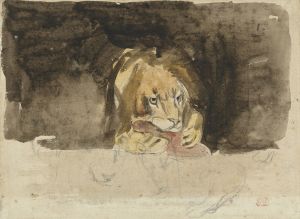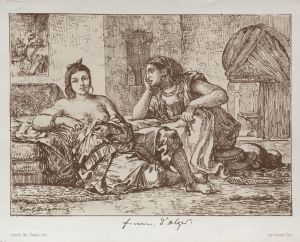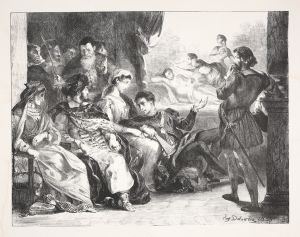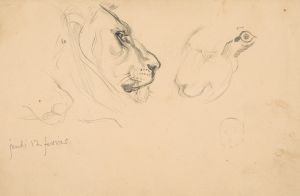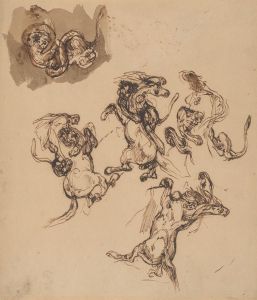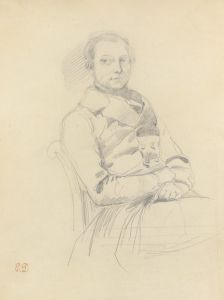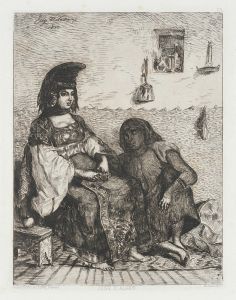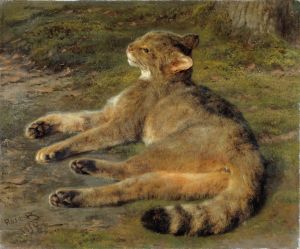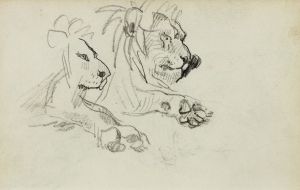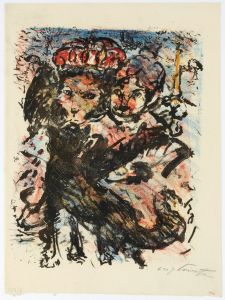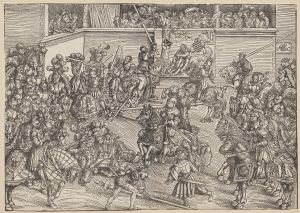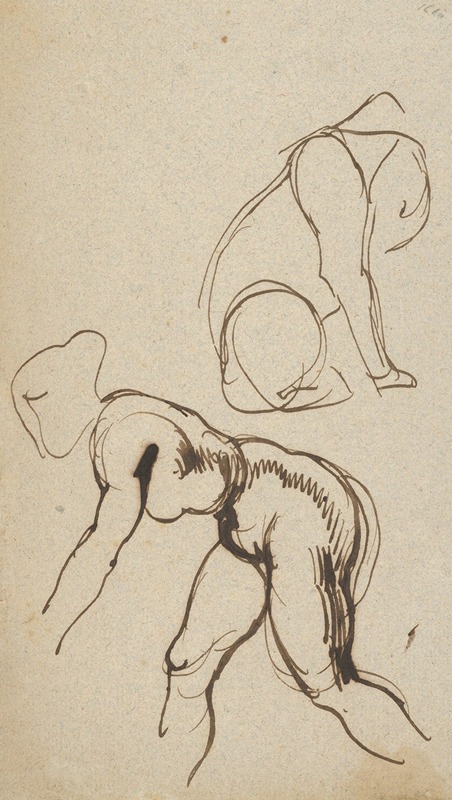
Studies of a Lion and a Female Nude
A hand-painted replica of Eugène Delacroix’s masterpiece Studies of a Lion and a Female Nude, meticulously crafted by professional artists to capture the true essence of the original. Each piece is created with museum-quality canvas and rare mineral pigments, carefully painted by experienced artists with delicate brushstrokes and rich, layered colors to perfectly recreate the texture of the original artwork. Unlike machine-printed reproductions, this hand-painted version brings the painting to life, infused with the artist’s emotions and skill in every stroke. Whether for personal collection or home decoration, it instantly elevates the artistic atmosphere of any space.
"Studies of a Lion and a Female Nude" is a drawing by the renowned French Romantic artist Eugène Delacroix. Delacroix, born on April 26, 1798, and deceased on August 13, 1863, is celebrated for his expressive brushstrokes and his study of the optical effects of color, which profoundly shaped the work of the Impressionists. His oeuvre is characterized by a fascination with the exotic, the dramatic, and the emotive, often drawing inspiration from literature, history, and his travels.
The drawing "Studies of a Lion and a Female Nude" exemplifies Delacroix's interest in the natural world and the human form, both of which were recurrent themes in his work. Delacroix was known for his ability to capture the dynamism and vitality of his subjects, a skill that is evident in this particular drawing. The piece is a study, meaning it was likely intended as a preparatory work or an exploration of form and composition, rather than a finished artwork meant for exhibition.
In this drawing, Delacroix juxtaposes the powerful, muscular form of a lion with the softer, more delicate figure of a female nude. This contrast highlights Delacroix's skill in rendering different textures and forms, as well as his interest in the interplay between strength and grace. The lion, a symbol of power and majesty, is a subject Delacroix returned to frequently, reflecting his fascination with wild animals and their representation in art. His studies of lions were informed by visits to zoos and menageries, where he could observe these creatures firsthand.
The female nude, on the other hand, is a classical subject in art history, representing beauty, vulnerability, and the idealized human form. Delacroix's treatment of the nude figure demonstrates his mastery of anatomy and his ability to convey emotion and narrative through posture and expression. The combination of these two subjects in a single study may suggest an exploration of themes such as nature versus civilization, or the coexistence of beauty and danger.
Delacroix's drawings, including "Studies of a Lion and a Female Nude," are often characterized by their fluid lines and dynamic compositions. His use of line is both precise and expressive, capturing the essence of his subjects with economy and grace. These qualities made his drawings highly valued both in his time and today, as they offer insight into his creative process and the development of his ideas.
While specific details about the provenance or current location of "Studies of a Lion and a Female Nude" may not be widely documented, Delacroix's works are held in numerous prestigious collections around the world, including the Louvre in Paris and the Metropolitan Museum of Art in New York. His influence on subsequent generations of artists is undeniable, as he pushed the boundaries of traditional art and paved the way for modern movements.
In summary, "Studies of a Lion and a Female Nude" is a testament to Eugène Delacroix's skill as a draftsman and his enduring interest in the dynamic interplay of form, emotion, and narrative in art.






